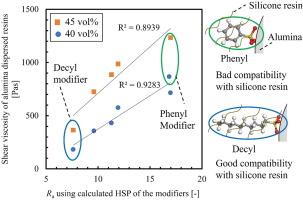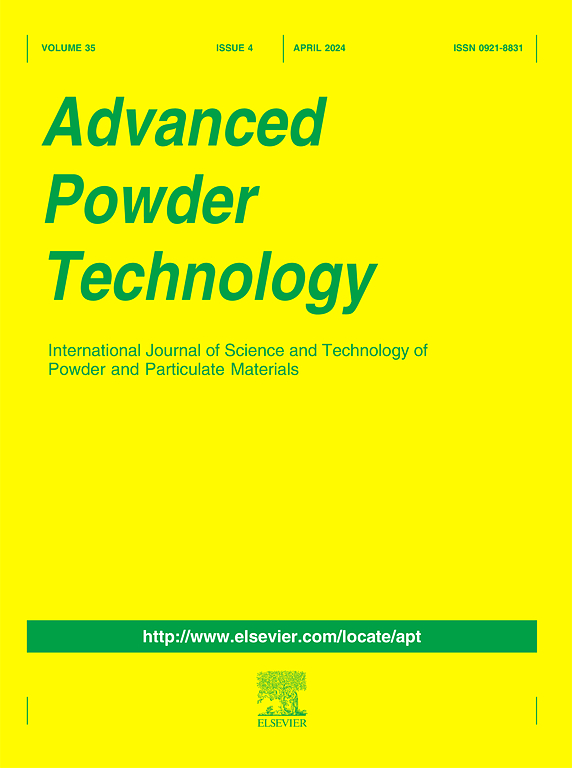Viscosity control of alumina dispersed resin through design of surface modifier by a QSPR-method
IF 4.2
2区 工程技术
Q2 ENGINEERING, CHEMICAL
引用次数: 0
Abstract
In order to dissipate heat in electronic devices, particle-dispersed resins are commonly used to fill gaps between components. It is crucial to reduce the viscosity of the particle-dispersed resin to ensure complete filling. To achieve low viscosity, surface-modified particles using silane coupling agents have been developed to enhance compatibility with the resin. In this study, we focused on the Hansen solubility parameter (HSP) indicating compatibility of substances. We established a method to accurately predict HSP values using a combination of quantum chemical calculations and machine learning techniques known as the quantitative structure property relationships method (QSPR-method). Using this method, we calculated the HSP values of various silane coupling agents for modifying alumina particles and investigated their correlation with the viscosity of the alumina particle-dispersed resin. This study aimed to verify whether the QSPR method can be used to design silane coupling agents that can significantly reduce viscosity of particle-dispersed resins.

通过 QSPR 方法设计表面改性剂控制氧化铝分散树脂的粘度
为了给电子设备散热,颗粒分散树脂通常用于填充元件之间的缝隙。降低颗粒分散树脂的粘度以确保完全填充至关重要。为了实现低粘度,人们开发了使用硅烷偶联剂的表面改性颗粒,以提高与树脂的相容性。在这项研究中,我们重点研究了表示物质相容性的汉森溶解度参数(HSP)。我们结合量子化学计算和机器学习技术,建立了一种准确预测 HSP 值的方法,即定量结构属性关系法(QSPR 法)。利用这种方法,我们计算了用于改性氧化铝颗粒的各种硅烷偶联剂的 HSP 值,并研究了它们与氧化铝颗粒分散树脂粘度的相关性。本研究旨在验证 QSPR 方法是否可用于设计能显著降低颗粒分散树脂粘度的硅烷偶联剂。
本文章由计算机程序翻译,如有差异,请以英文原文为准。
求助全文
约1分钟内获得全文
求助全文
来源期刊

Advanced Powder Technology
工程技术-工程:化工
CiteScore
9.50
自引率
7.70%
发文量
424
审稿时长
55 days
期刊介绍:
The aim of Advanced Powder Technology is to meet the demand for an international journal that integrates all aspects of science and technology research on powder and particulate materials. The journal fulfills this purpose by publishing original research papers, rapid communications, reviews, and translated articles by prominent researchers worldwide.
The editorial work of Advanced Powder Technology, which was founded as the International Journal of the Society of Powder Technology, Japan, is now shared by distinguished board members, who operate in a unique framework designed to respond to the increasing global demand for articles on not only powder and particles, but also on various materials produced from them.
Advanced Powder Technology covers various areas, but a discussion of powder and particles is required in articles. Topics include: Production of powder and particulate materials in gases and liquids(nanoparticles, fine ceramics, pharmaceuticals, novel functional materials, etc.); Aerosol and colloidal processing; Powder and particle characterization; Dynamics and phenomena; Calculation and simulation (CFD, DEM, Monte Carlo method, population balance, etc.); Measurement and control of powder processes; Particle modification; Comminution; Powder handling and operations (storage, transport, granulation, separation, fluidization, etc.)
 求助内容:
求助内容: 应助结果提醒方式:
应助结果提醒方式:


